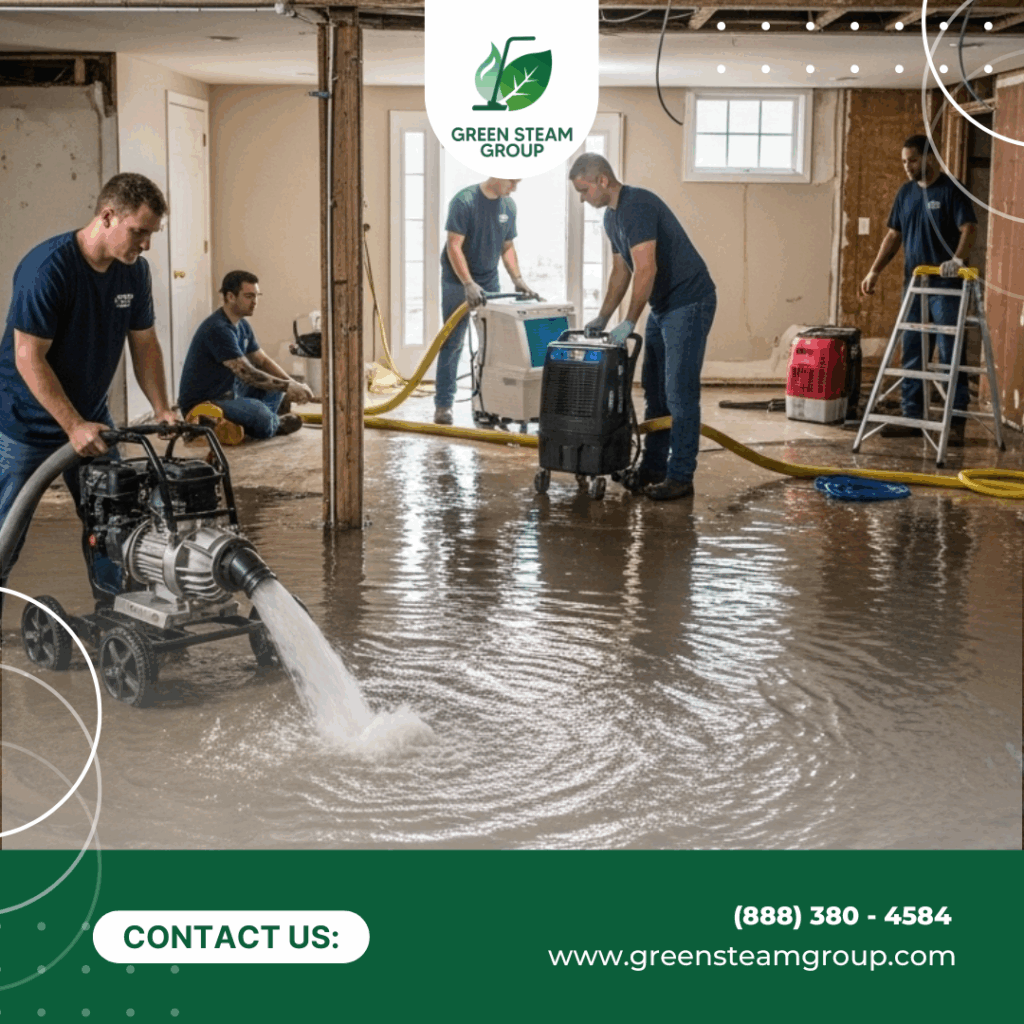Water is essential for everyday life—but when it ends up where it doesn’t belong, it can quickly become a homeowner’s worst nightmare. Water damage is one of the most common and costly disasters affecting homes across the country. From slow leaks to sudden floods, it can lead to structural issues, mold growth, and expensive repairs.
Understanding what causes water damage is the first step toward preventing it. In this article, we’ll explore the most common causes of water damage in homes, how to recognize the warning signs, and what you can do to protect your property.
Why Water Damage Should Never Be Ignored
Even minor water leaks can lead to big problems over time. Left untreated, water damage can:
- Weaken your home’s foundation and structural integrity
- Cause mold and mildew that impact indoor air quality
- Destroy floors, walls, and insulation
- Lead to electrical hazards and fire risks
- Decrease the value of your property
The key is early detection and fast action.
Top 7 Causes of Water Damage in Homes
1. Plumbing Leaks
Leaky pipes are one of the leading causes of water damage. Whether it’s under the sink, behind the wall, or in the basement, pipe leaks can go unnoticed for weeks or months until significant damage occurs.
Common plumbing issues include:
- Worn-out pipe joints
- Corroded pipes
- Broken seals around appliances
- Faulty supply lines
- Clogged drains and backups
Regular inspections and maintenance can help catch problems early.
2. Roof Leaks
Your roof is your home’s first line of defense against the elements. Damaged shingles, broken flashing, clogged gutters, or aging materials can allow rainwater to seep into your attic and walls, leading to hidden water damage and mold growth.
Make sure to inspect your roof at least once a year—especially after major storms.
3. Appliance Failures
Household appliances like washing machines, dishwashers, refrigerators, and water heaters can leak or overflow if hoses wear out or seals fail.
Key culprits include:
- Cracked supply hoses on washers
- Overfilled dishwashers
- Leaking refrigerator ice makers
- Rusted water heater tanks
Replace aging appliances and inspect connections regularly to avoid a messy surprise.
4. Clogged Gutters and Downspouts
Gutters are designed to channel water away from your home. But when they’re clogged with leaves, debris, or ice, water can overflow and seep into your walls, foundation, or basement—causing serious water damage over time.
Clean your gutters at least twice a year and ensure downspouts direct water away from the home.
5. HVAC System Issues
Your heating and cooling systems regulate indoor temperature and moisture. But when condensation lines or drain pans are clogged or malfunctioning, they can leak water into floors, ceilings, or walls.
Have your HVAC system serviced annually and clean or replace filters to prevent condensation problems.
6. Sewer Backups
A sewer line blockage can push wastewater back into your home through toilets, tubs, or sinks. Not only is this a source of extensive water damage, but it also poses serious health risks.
Warning signs include gurgling drains, slow flushing toilets, and foul odors. Install a backwater valve and avoid flushing anything other than toilet paper to reduce risk.
7. Natural Disasters and Flooding
Heavy rainfall, hurricanes, or flash floods can overwhelm your home’s drainage system and lead to immediate and severe water damage. While these events are harder to predict, you can reduce their impact by:
- Elevating important equipment off the floor
- Sealing basement walls and floors
- Installing a sump pump with a battery backup
- Purchasing flood insurance if you’re in a high-risk area
Warning Signs of Water Damage
Being proactive means learning how to spot the signs of trouble. Common symptoms of water damage include:
- Water stains on ceilings or walls
- Peeling paint or wallpaper
- Warped floors or buckling wood
- A musty or damp smell
- Visible mold or mildew
- Sudden spikes in water bills
If you notice any of these, call a water damage restoration expert right away.
What to Do If You Experience Water Damage
Fast action is essential to minimize damage and avoid mold. Here’s what to do:
- Turn off the water source (if possible).
- Shut off electricity in affected areas to avoid electrical hazards.
- Document the damage with photos for insurance.
- Remove standing water with wet/dry vacuums or towels.
- Call a professional water damage restoration company immediately.
Don’t wait—mold can begin growing within 24 to 48 hours.
How to Prevent Water Damage
While not all disasters can be avoided, preventive steps can drastically reduce your risk:
- Schedule annual plumbing and HVAC inspections
- Install leak detectors under sinks and behind appliances
- Regularly check your attic, roof, and basement for signs of moisture
- Seal cracks in your foundation
- Know where your water shut-off valve is located
An ounce of prevention really is worth a pound of cure.
Final Thoughts: Protect Your Home from Water Damage
Water is one of the most destructive elements your home can face. But with the right knowledge and proactive steps, you can greatly reduce the chance of costly damage. Whether it’s a slow leak or a sudden flood, being prepared—and knowing when to call for professional help—makes all the difference.
Don’t let hidden leaks turn into major repairs. Schedule a water damage inspection or restoration service today and protect the place you call home.
READ MORE:

